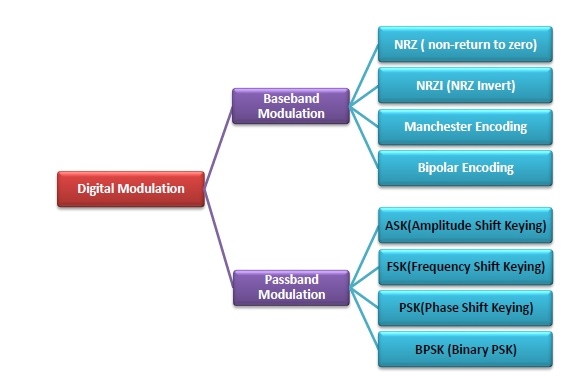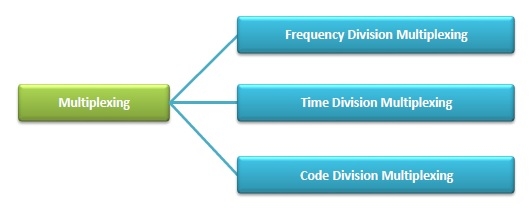
 Data Structure
Data Structure Networking
Networking RDBMS
RDBMS Operating System
Operating System Java
Java MS Excel
MS Excel iOS
iOS HTML
HTML CSS
CSS Android
Android Python
Python C Programming
C Programming C++
C++ C#
C# MongoDB
MongoDB MySQL
MySQL Javascript
Javascript PHP
PHP
- Selected Reading
- UPSC IAS Exams Notes
- Developer's Best Practices
- Questions and Answers
- Effective Resume Writing
- HR Interview Questions
- Computer Glossary
- Who is Who
The Modulation and Multiplexing
Modulation
Modulation is the process of transforming a carrier signal so that it can carry the information of a message signal. It superimposes the contents of the message signal over a high-frequency carrier signal, which is then transmitted over communication channels.
Modulation can be of two types −
- Analog Modulation
- Digital Modulation
Analog Modulation
Here, the analog information signal is transformed to the analog carrier signal so that it can travel large distances without substantial loss.
Analog modulation can be of three types −
- Amplitude Modulation
- Frequency Modulation
- Phase Modulation
Digital Modulation
Digital modulation is the process of converting a digital bit stream into an analog carrier wave for transmission via a communication channel.
Digital modulation is broadly divided into two categories −
-
Bandpass Modulation as in baseband transmission:
Here, the bits are converted directly into signals.
-
Passband Modulation as in passband transmission:
Here, the amplitude, phase or frequency of the carrier signal is regulated to transmit the bits.
The following diagram illustrates the different digital modulation schemes −

Multiplexing
This is a method of combining more than one signal over a shared medium. Multiplexing divides the capacity of a communication channel into several logical channels, each for a data stream. The method of extracting the original data streams from the multiplexed signal is called demultiplexing.
The methods of multiplexing are as follows −


